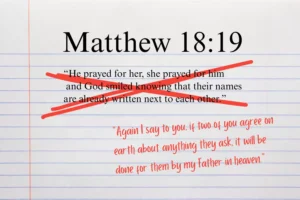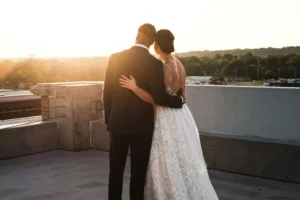We just finished studying the book of Ruth in the young girls’ Bible study I help lead at church. As we read through each chapter, I saw again and again how easy it is to give props to Ruth for all her amazing character qualities: hardworking, humble, kind, dependable. But I didn’t fully grasp the depth of Ruth until I prepared to teach Ruth 3.
Ruth 3 tells of when Ruth visited Boaz on the threshing floor to make her appeal for marriage. We read about how she snuck in, waited until all the partying men were asleep, then crept over to Boaz where she uncovered his feet and lay down.
I wasn’t sure how I was supposed to teach this to a group of preteen girls. We leaders certainly aren’t encouraging similar behavior, and I knew I didn’t fully understand all the cultural implications of Ruth’s actions.
I started listening to one well-known pastor’s sermon, but stopped when I realized his entire series was built around pulling out courtship and marriage guidelines from the book. Again, not really the direction we were headed in our class of girls ranging in age from 9 to 14.
More than a marriage manual
There had to be more to Ruth than this, right? Surely God didn’t put this story in the Bible only to tell us how to find a spouse. (And to be honest, I’m not even sure it’s really that helpful in that respect for those of us living without Israelite social customs and a nearby threshing floor.)
We’ve been introducing our girls to the idea that Old Testament stories “foreshadow” or point to Christ. I love seeing their first realizations that the Bible is one book about Christ and not a disconnected series of how-to lessons on morality – or finding a spouse. But how did Ruth and Boaz’s whispered conversation on that threshing floor point to Christ?
I found another sermon by another well-known pastor that started connecting the dots for me, illuminating aspects of foreshadowing Jesus that I had heard bits and pieces of before. It all centered around the kinsman-redeemer.
Basically, Ruth and Naomi needed someone to provide for them. In ancient cultures – not just in Israel – women without husbands were rarely well-off. Men were the main breadwinners, and unmarried women or widows often struggled to have enough food to eat. The two women were likely also concerned about safety, since the story takes place “when the judges judged,” which, according to the book of Judges, was no picnic.
In the book of Ruth, we see how God provided for widows to receive safety and provision through Israelite law and tradition: the kinsman redeemer, or a close relative who could marry the widow. This is essentially what Ruth was asking Boaz for (at Naomi’s insistence) that night on the threshing floor.
A willing redeemer
All of Ruth shows us this parallel. But the real kicker for me is in chapter 3. The closer relative’s later refusal proved that redeeming widows in the family was not required, so apparently the redeemer was not obligated to provide for and protect the widow. When Ruth petitioned Boaz that night, he could have told this Moabite foreigner to get out and get lost.
No one would have thought less of him for it – at least they didn’t seem to think less of the other relative, who was concerned about jeopardizing his estate. Really, probably no one would have even known. If they had, they wouldn’t have faulted him for refusing to marry a foreigner – a huge deal in ancient Israel.
He didn’t have to redeem her.
Most of us grew up knowing that Boaz agreed to marry Ruth, that he put her needs ahead of his own concerns about reputation or estate. But read Ruth 3 again. Boaz didn’t simply agree. He didn’t just grudgingly take care of Ruth as his duty.
In a move that points us to our Redeemer, Boaz made it clear to Ruth that he was happy to redeem her. More than willing. He even blessed her for asking him, and before a talk with the elders solidified their marriage plan, he sent her home with a generous gift of food to prove his intentions.
I already knew that each book in the Bible holds more meaning and value than we realize, but Ruth 3 showed me just how true that is. Where I first saw a culturally-specific chapter that really just linked one part of the book to the next, I now see one of the most beautiful pictures of the gospel.
Thousands of years later, Ruth’s descendant — our true Redeemer — would show the full picture of what Boaz had given only a glimpse: Jesus is happy to redeem us.
Copyright 2021 Lauren Dunn. All rights reserved.











